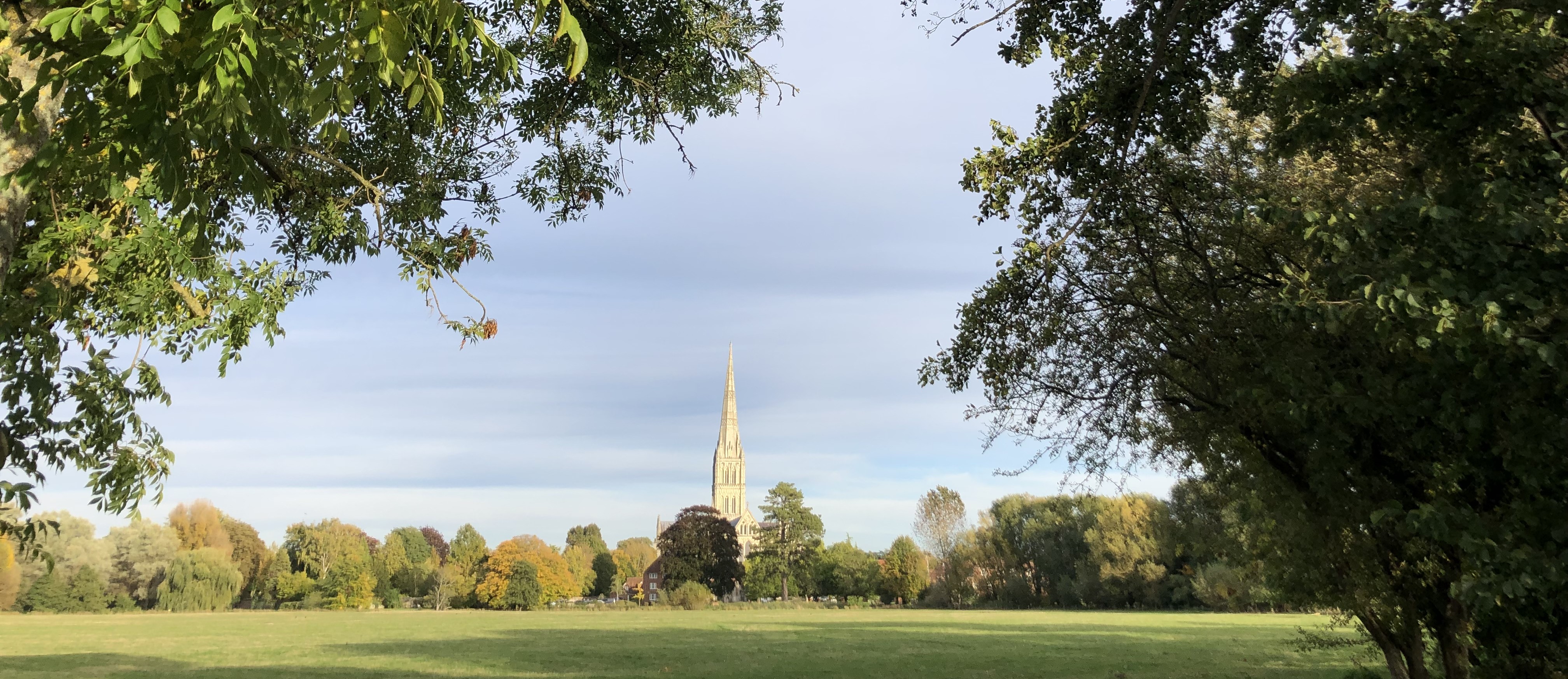A mild autumn day greeted me as I started out from home on a fourteen-mile pilgrimage1 for the care of creation2 to Salisbury Cathedral on 4 October, the feast day of St Francis, recognised as the patron saint of ecology.3 My intention was opening my heart and mind to the impressions of nature – simple awareness of the breath of life in and around me.
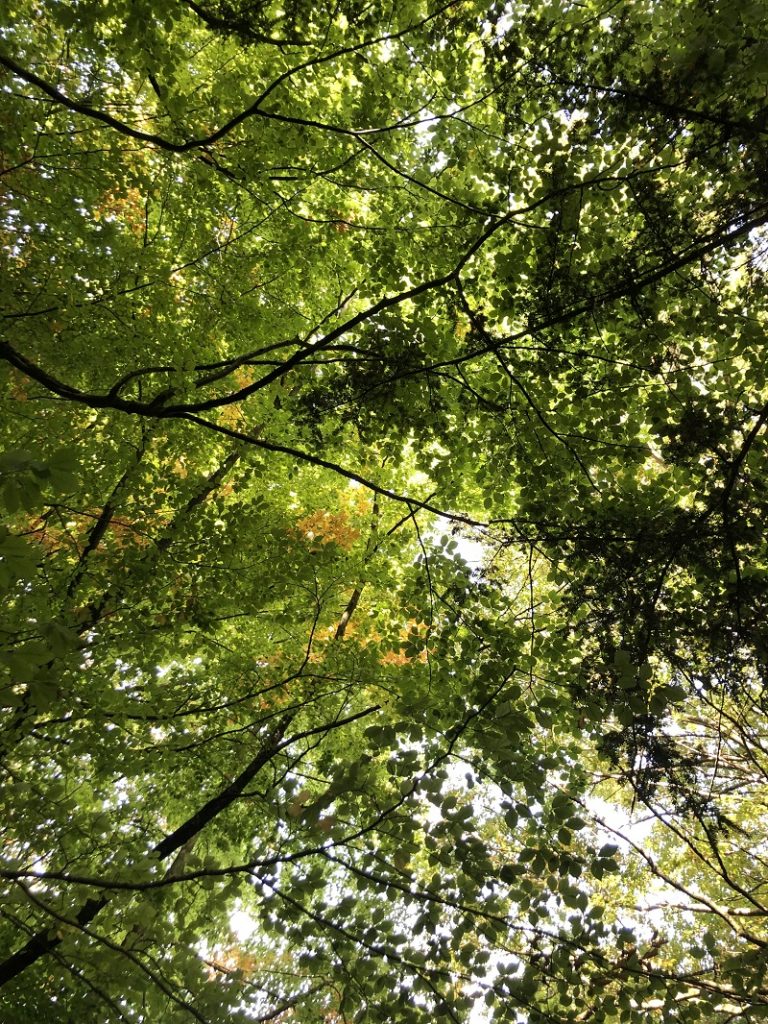
After only a quarter of a mile, my hands were clutching a bundle of packaging, tins and plastic, carelessly discarded in the small country lane, testimony to a disconnect from care for the planet on which our future depends. Yet dropping down into the small village of Teffont, serenaded by the gentle sway of the wind kissing a canopy of beech trees, birdsong carried in the air, I felt a sense of peace and connection to life around me. Lighting a candle in our tranquil, local church, I silently recited the words of a prayer that has long beckoned for a recognition that our climate, ecological and health crisis requires more than political will and practical action. It calls for a spiritual turning to the wisdom of the sacred, interconnectedness of life from which care can spring.
‘Tune the song of our hearts to the music of creation’
From a prayer
Onwards through the village, a tree abundant with unharvested apples had dropped some of its wares into the Nadder chalk stream, a family of house sparrows chattered in an attractively unkempt garden. Puffing lightly up the steep, narrow, tree lined so-called coffin path, I stopped to acknowledge an old, ash tree growing sidewards then upwards towards the light, a landmark I loved as I marvelled afresh at its thick, patterned bark, before moving through woodland. This route, one of my favourites, always brings a sense of wellbeing walking amongst the trees.
Realise that everything connects to everything else.’
Leonardo da Vinci

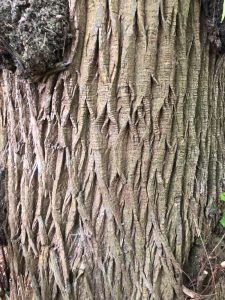
The Japanese have long recognised the therapeutic qualities of trees in their practice of Shirin-Yoku or Forest Bathing. Being in nature and amongst trees is beneficial for our health – alleviating stress, lifting mood, increasing our natural killer cells, reducing blood pressure, improving memory and attention. Trees emit phytonicides, natural oils, into the air which impact wellbeing. Mycobacterium vaccae in the soil make us feel happier. Our brains are wired to respond positively to universal patterns in nature.4
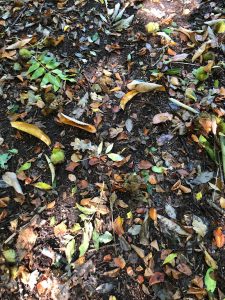
Out into Dinton Park, a tranquil bench at the top of this National Trust property affords a distant view of the spire of Salisbury Cathedral. Just below, an ancient hoary, sweet chestnut tree, extended an irresistible invitation to rest against its rough bark, its autumn harvest not yet ready for a foraging feast. Being amongst trees and beautiful landscape, aware of the gentle rhythm of your breathing, is a gift opening up a new perception of the beauty of life around you. The symbiotic relationship between fungi and an ancient oak tree harbouring a rich diversity of life. The crunch of nuts underfoot and a mosaic of autumn leaves on the woodland floor returning nutrients and seeds to the earth in a cycle of renewal. The beauty of the pattern of veins in an ivy leaf so often passed by. Intimations of the sacred in and around us when we turn our attention to look and see.
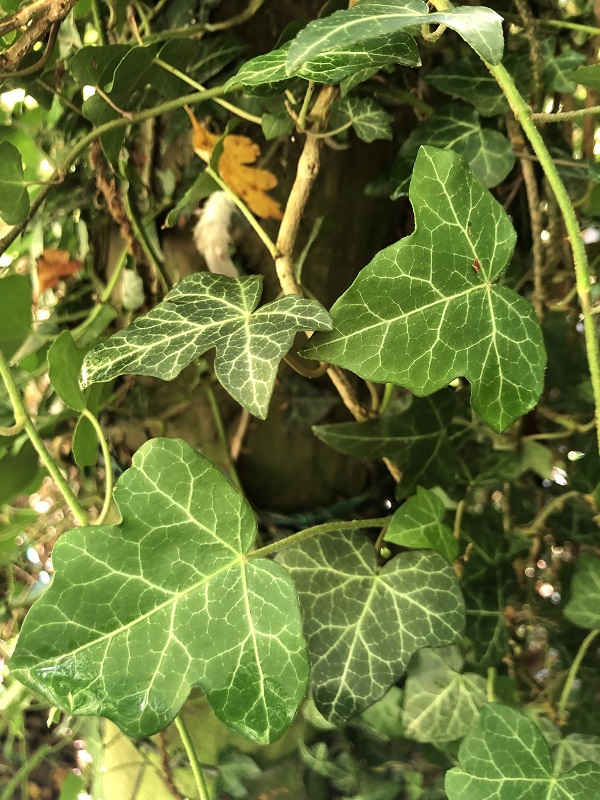
‘To see a world in a grain of sand,
And a heaven in a wild flower,
Hold infinity in the palm of your hand,
And eternity in an hour.’
William Blake, from Auguries of Innocence
Life is beautiful were the words which welled up from a deep feeling of being alive in 2016, the year I was diagnosed with stage 3 cancer. Yet all too often since, this sentiment has been absent caught in the busyness of life since my health returned. Moments on this pilgrimage in nature brought me back to a sense of reverence for life and connection with a greater whole. What will it take for humanity to feel moved by the existential threat of climate change, biodiversity loss and crisis in human health caused by our lack of care?
Out of the woods and on from the tiny hamlet of Baverstock with its ancient church dedicated to local St Edith, onwards I strode along an old ox drove passing alongside woodland, once coppiced hazels and into open landscape. A red kite circled over a pocket of land returned to nature looking for prey. As I walked by a panorama of crop fields now ploughed or stubble and tracts of land with free ranging pigs, my thoughts intruded to ruminate on the future of farming and the use of land.
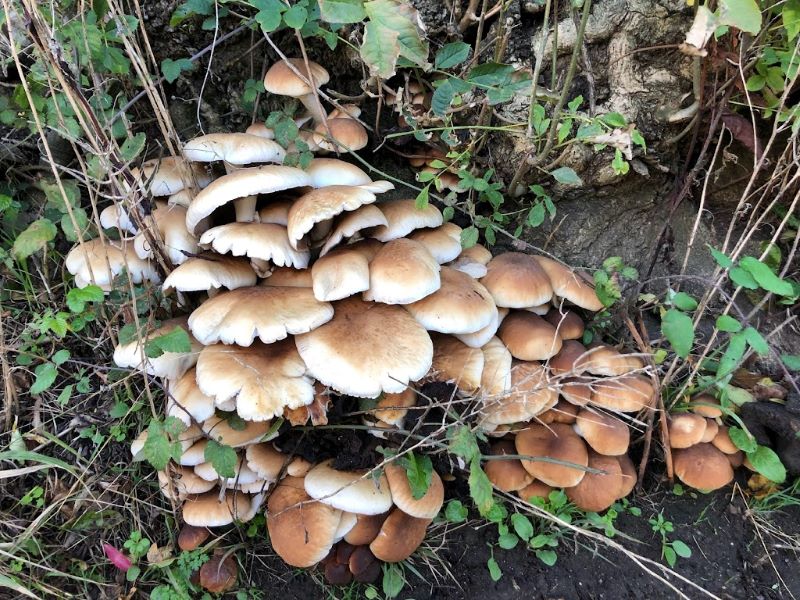

We have lost our sense of connection to where food comes from, the health of the soil and its relationship to our health and the wider diversity of life. Yet we are part of nature. Our bodies are home to a teeming ecosystem of trillions of microbes vastly outnumbering human cells, powering our immune system and regulating our mood. Surely this cries out for care in how food is produced and consumed – and for living more in harmony with the natural world in and around us?
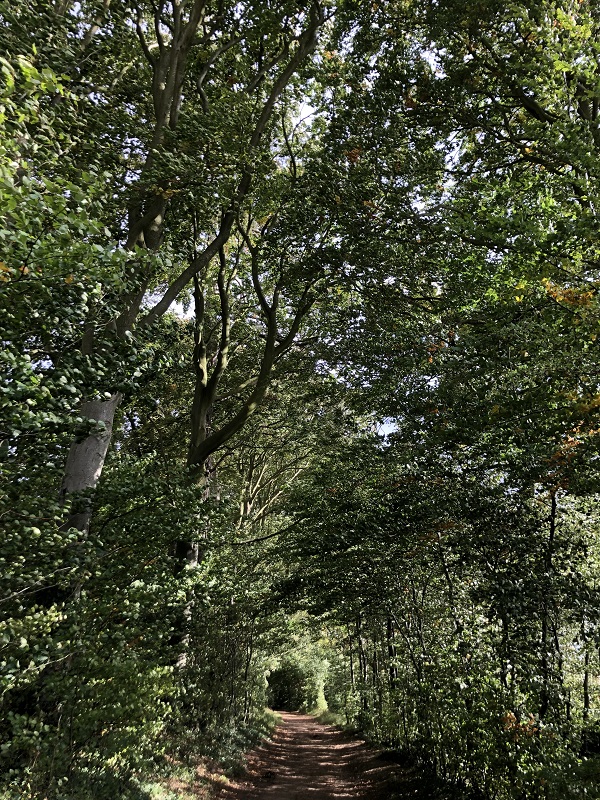
Dropping down along a track lined with a long avenue of majestic beech trees, I finally hit tarmac in Wilton, once King Alfred’s ancient capital of Wessex and home to an abbey long since disappeared, now a small market town abuzz with traffic. A sense of the sacred is more easily lost in this manmade terrain. The quiet of a chapel with its tiny peace garden beckoned to reconnect to the intention of my pilgrimage.
Onwards crossing a busy road towards Salisbury and flat, harvested fields with cathedral spire in the distance, a spark of wonder was rekindled by a line of silver poplars shimmering in the wind. Through a small gateway to the final stretch of the journey passing the iconic view of Salisbury Cathedral across the water meadows painted by Constable, arriving at my destination in time for evensong. This pilgrimage was for me a journey of ebb and flow of thoughts and quiet wonder, hope and beauty lost and restored in nature and spiritual turning, ending with the poignant beauty of choral song and candlelight in the cathedral, its stones infused with hundreds of years of prayer.
How can we cultivate care in ourselves and a wider community of care? I don’t have the answer, but I invite others to take part in pilgrimage to open our hearts and minds to the beauty and interconnectedness of life around us. May the light of the sacred shine on our path.
Source of all life, whom the angels sing; wondrous Light of all mysteries known or unknown to humankind, and life that lives in all.’
Hildegard of Bingen, 13th century
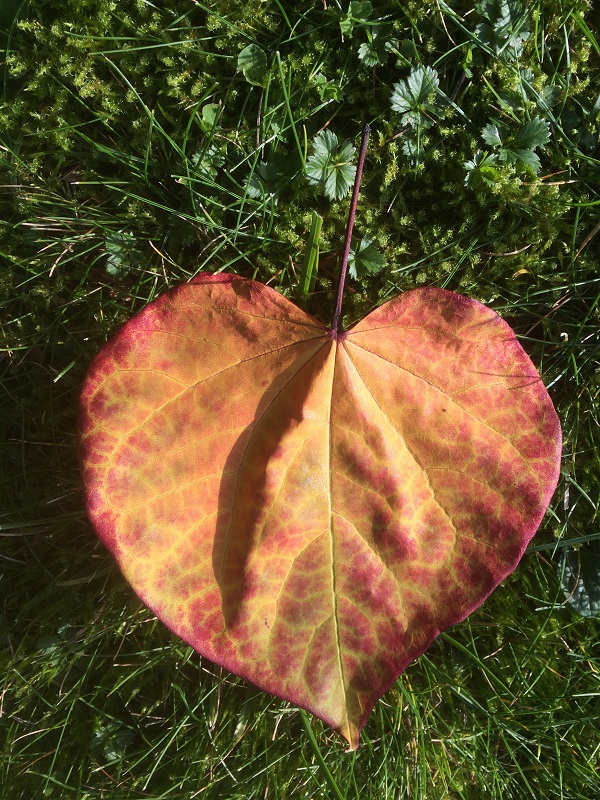
To register your interest in taking part in local pilgrimages to Salisbury Cathedral, email: pilgrimage@positivenature.world.
See also the British Pilgrimage Trust’s website for pilgrimage routes across the UK including pilgrimage in a day to Salisbury Cathedral.
NOTES
- The pilgrimage followed the British Pilgrimage Trust’s St Edith of Wilton’s way adding on an additional leg from Teffont to Dinton and modifying the footpath route from Dinton to Baverstock to pass through more woodland. See https://britishpilgrimage.org/portfolio/salisbury-cathedral-pilgrimage-in-a-day/
- The Season of Creation (https://seasonofcreation.org) is an annual international Christian celebration beginning on 1 September with a World Day of Prayer for the Care of Creation and ending on 4 October, the Feast of St Francis of Assisi. It stems from the Day of Prayer for the Environment initiated by the Orthodox Christian leader, Ecumenical Patriarch Demetrios, which has been observed on 1st September since 1989. His successor, Ecumenical Patriarch Bartholomew, known as the Green Patriarch, has led a series of international intercultural and interfaith symposia on protection of the environment, and was named one of Time Magazine’s 100 Most Influential People in the World in 2008 for defining environmentalism as a spiritual responsibility. Read his quotes on Environmental Justice and Peace at https://www.orthodoxcouncil.org/-the-green-patriarch-.html#
- St Francis, canonised two years after his death in 1226, was designated the patron saint of ecology by Pope John Paul II in 1979. He is revered for his care and special relationship with animals (see stories of the saint by a contemporary of St Francis https://www.humanesociety.org/sites/default/files/docs/stories-about-st-francis.pdf).
- See Shinrin-Yoku, the Art and Science of Forest-Bathing, How Trees Can Help You Find Health and Happiness, Dr Qing Li, Penguin Random House UK 2018.


